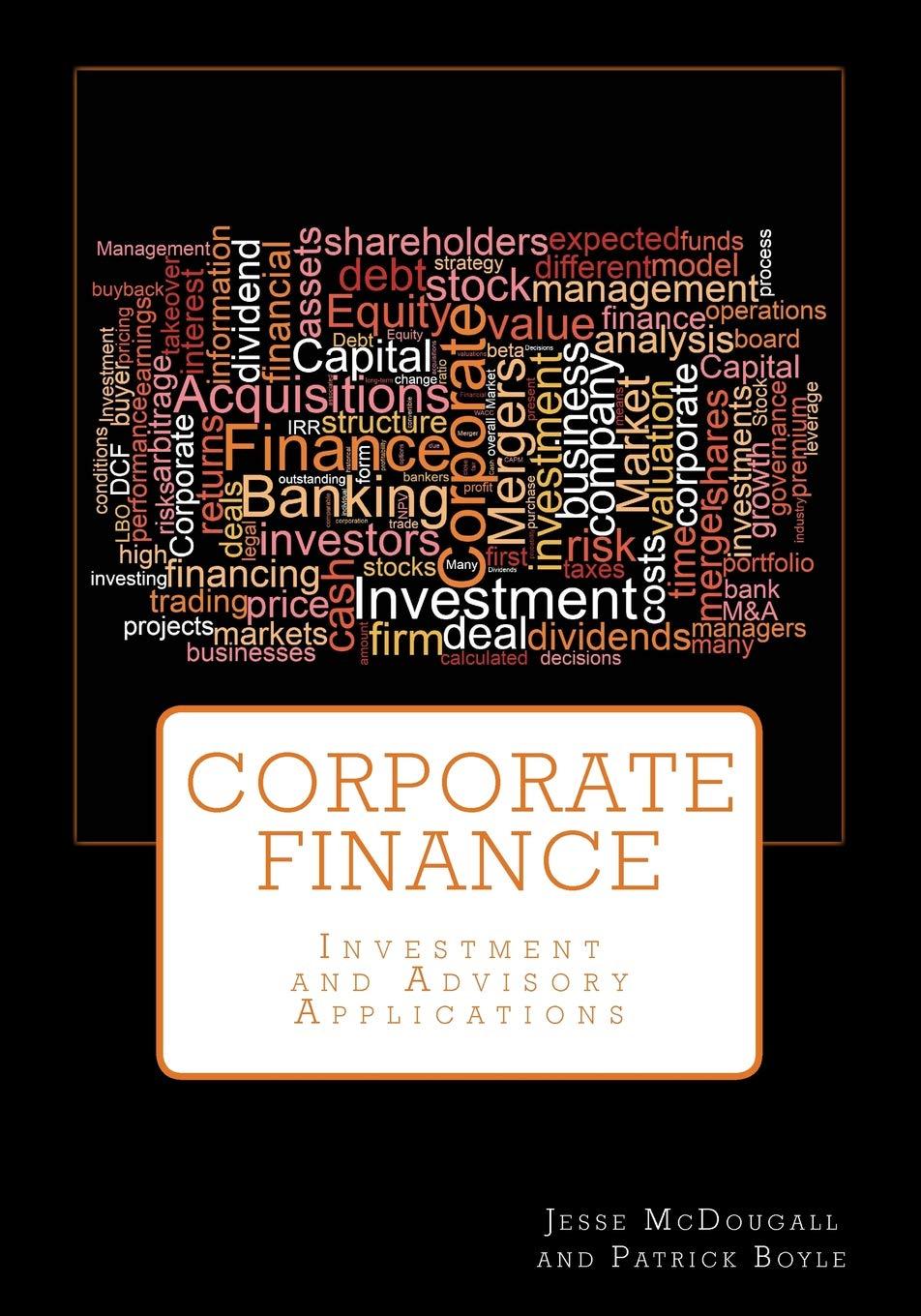Question
Consider an American call option with an exercise price of $60 and two years to expiration on a companys stock. The company does not pay
Consider an American call option with an exercise price of $60 and two years to expiration on a companys stock. The company does not pay any dividends. The companys stock price today is $40. The annual risk-free rate is 5%. You have the following information about the companys monthly closing stock price over the last three years: Apr-2016 $14 Apr-2017 $16 Apr-2018 $52 May-2016 $21 May-2017 $23 May-2018 $51 Jun-2016 $22 Jun-2017 $24 Jun-2018 $47 Jul-2016 $29 Jul-2017 $25 Jul-2018 $52 Aug-2016 $26 Aug-2017 $32 Aug-2018 $47 Sep-2016 $33 Sep-2017 $36 Sep-2018 $45 Oct-2016 $30 Oct-2017 $34 Oct-2018 $38 Nov-2016 $29 Nov-2017 $41 Nov-2018 $35 Dec-2016 $32 Dec-2017 $38 Dec-2018 $32 Jan-2017 $22 Jan-2018 $40 Jan-2019 $38 Feb-2017 $19 Feb-2018 $45 Feb-2019 $43 Mar-2017 $18 Mar-2018 $47 Mar-2019 $40 3a) (10 points) Use the Black-Scholes formula to calculate the value of the call option. You can use the information about monthly closing stock prices above to compute . Please be sure to show the value of the inputs into the Black-Scholes formula that you are using and explain where they came from. Steps to computing : a. Calculate the ln (1 + return), where ln is the natural log, for each month. Note: We did not talk about this in class, but is actually defined as the standard deviation of ln (1 + return) rather than the standard deviation of the actual return. Using actual return instead of ln (1 + return) to compute the standard deviation does not usually make a large difference in the final valuation. b. Compute the monthly standard deviation of ln (1 + return). You can use the formula STDEV.S in Excel to compute this standard deviation. c. Multiply the monthly standard deviation by 12 to convert it to an annual standard deviation. 3b) (5 points) Does the fact that the call option is American invalidate the use of the Black-Scholes model in valuing it? Question 2 might be relevant in answering this question. 3c) (5 points) Now suppose that you do not observe the above information about prices, so you cannot estimate the volatility of stock returns, but you do observe that an American call option with an exercise price of $60 and two years to expiration on the companys stock trades at $20. Calculate the implied volatility.
Step by Step Solution
There are 3 Steps involved in it
Step: 1

Get Instant Access to Expert-Tailored Solutions
See step-by-step solutions with expert insights and AI powered tools for academic success
Step: 2

Step: 3

Ace Your Homework with AI
Get the answers you need in no time with our AI-driven, step-by-step assistance
Get Started


